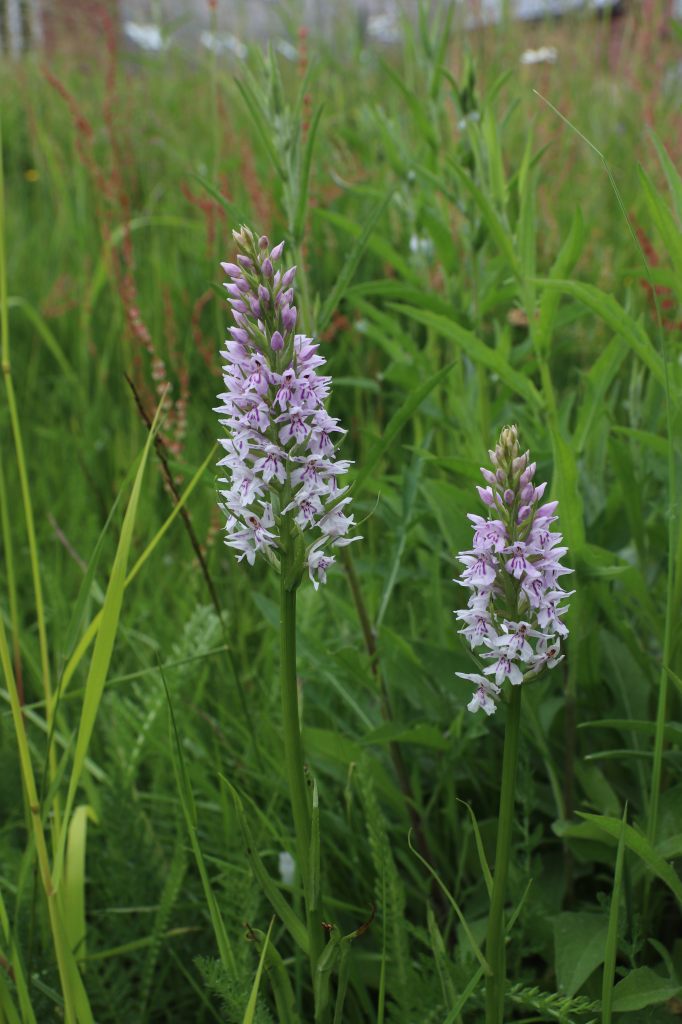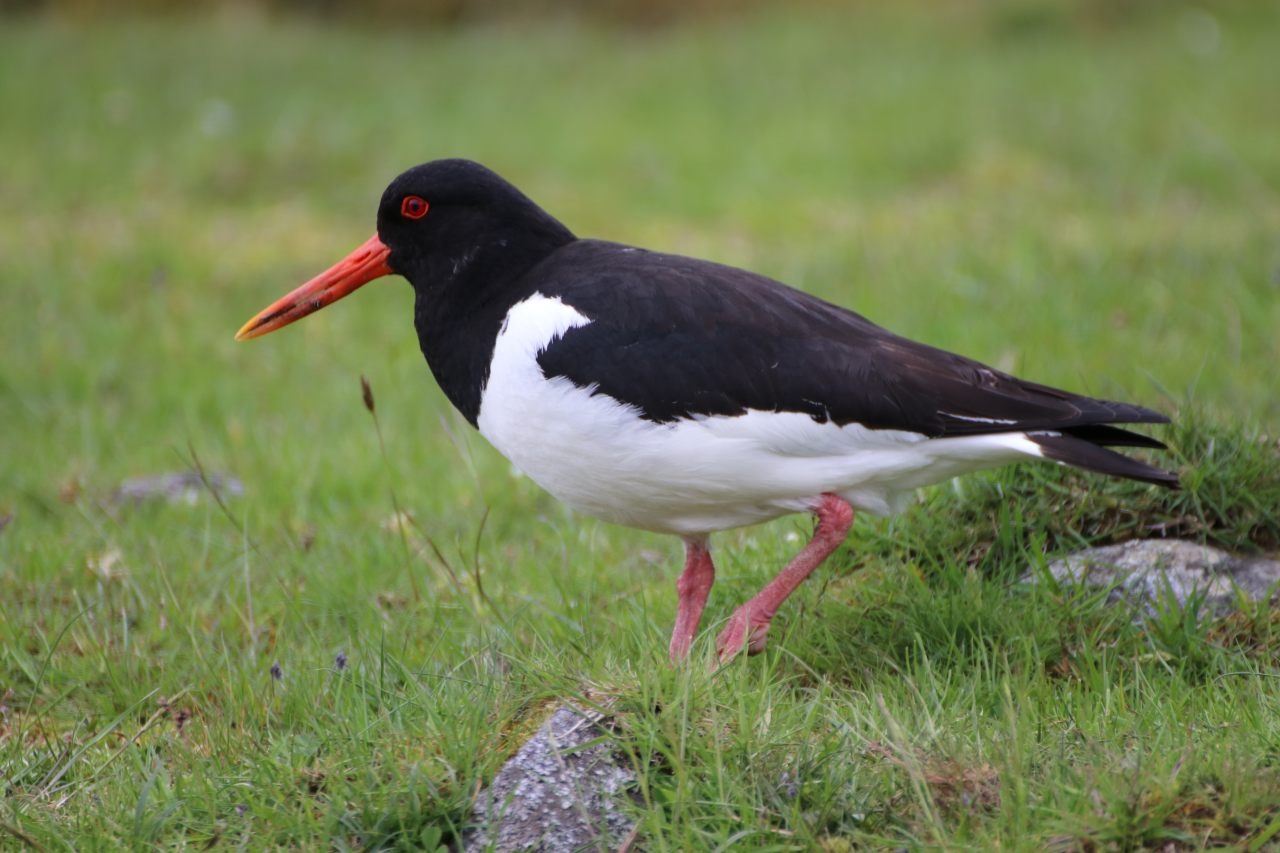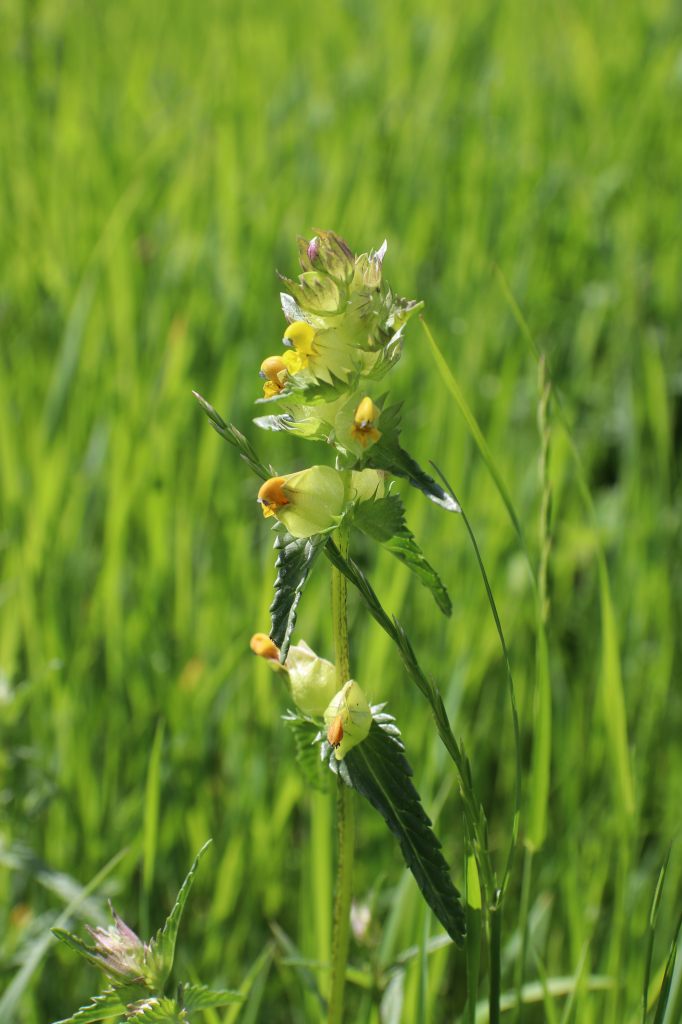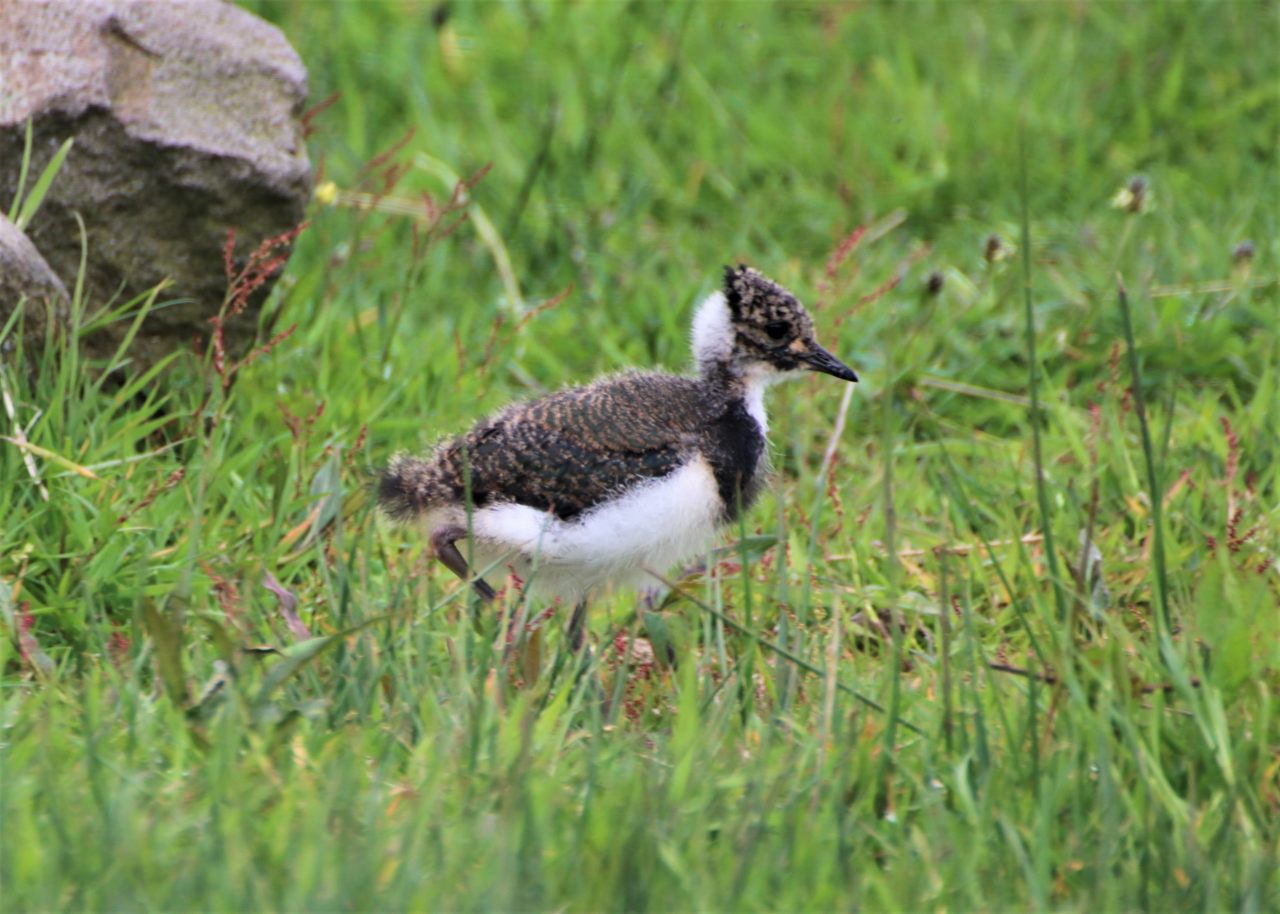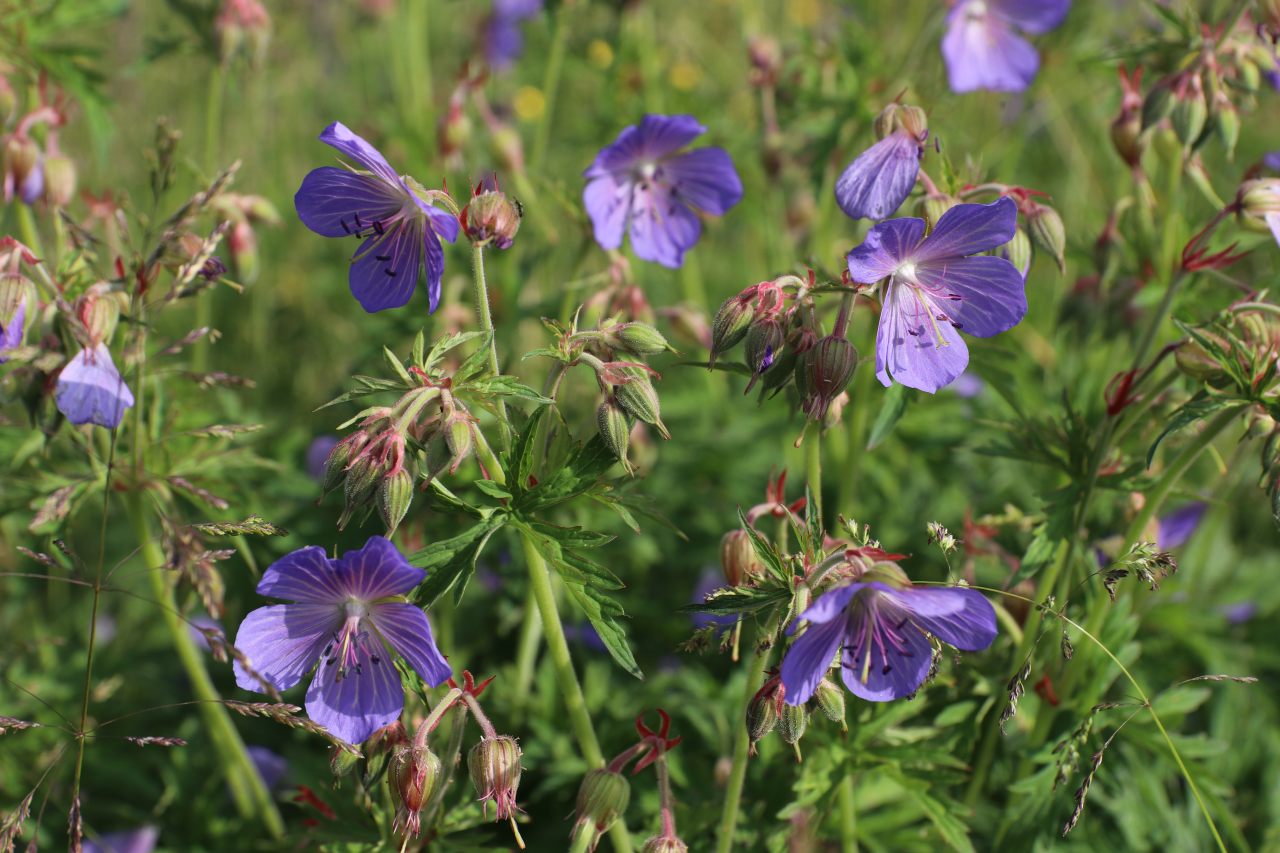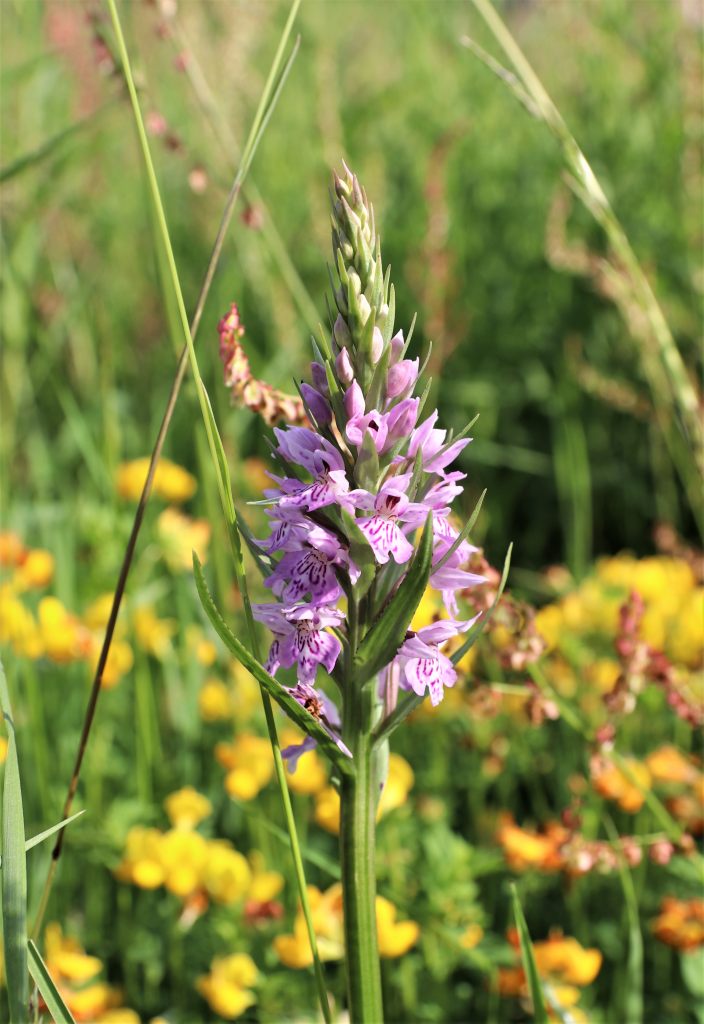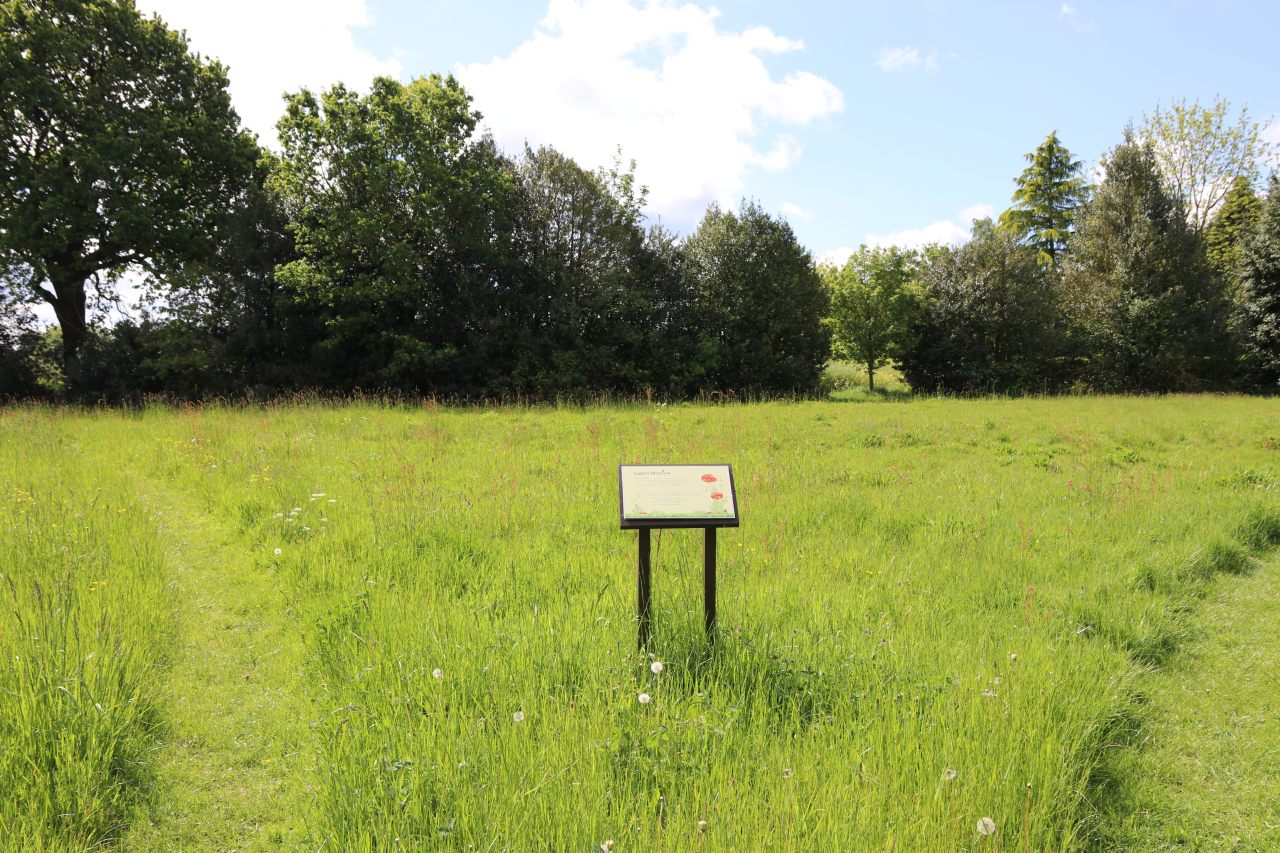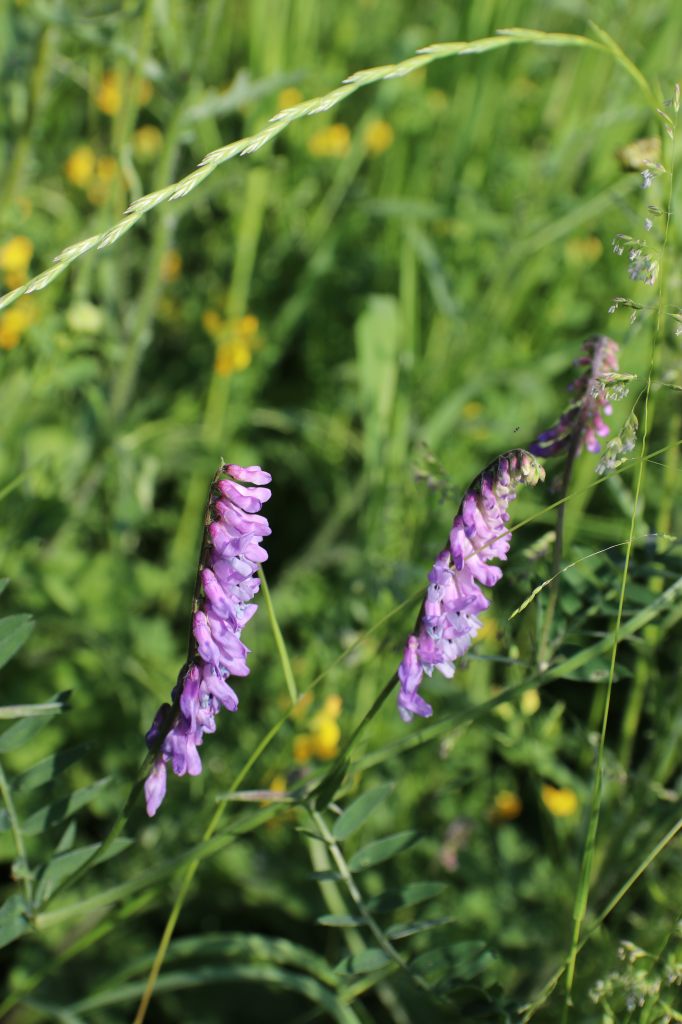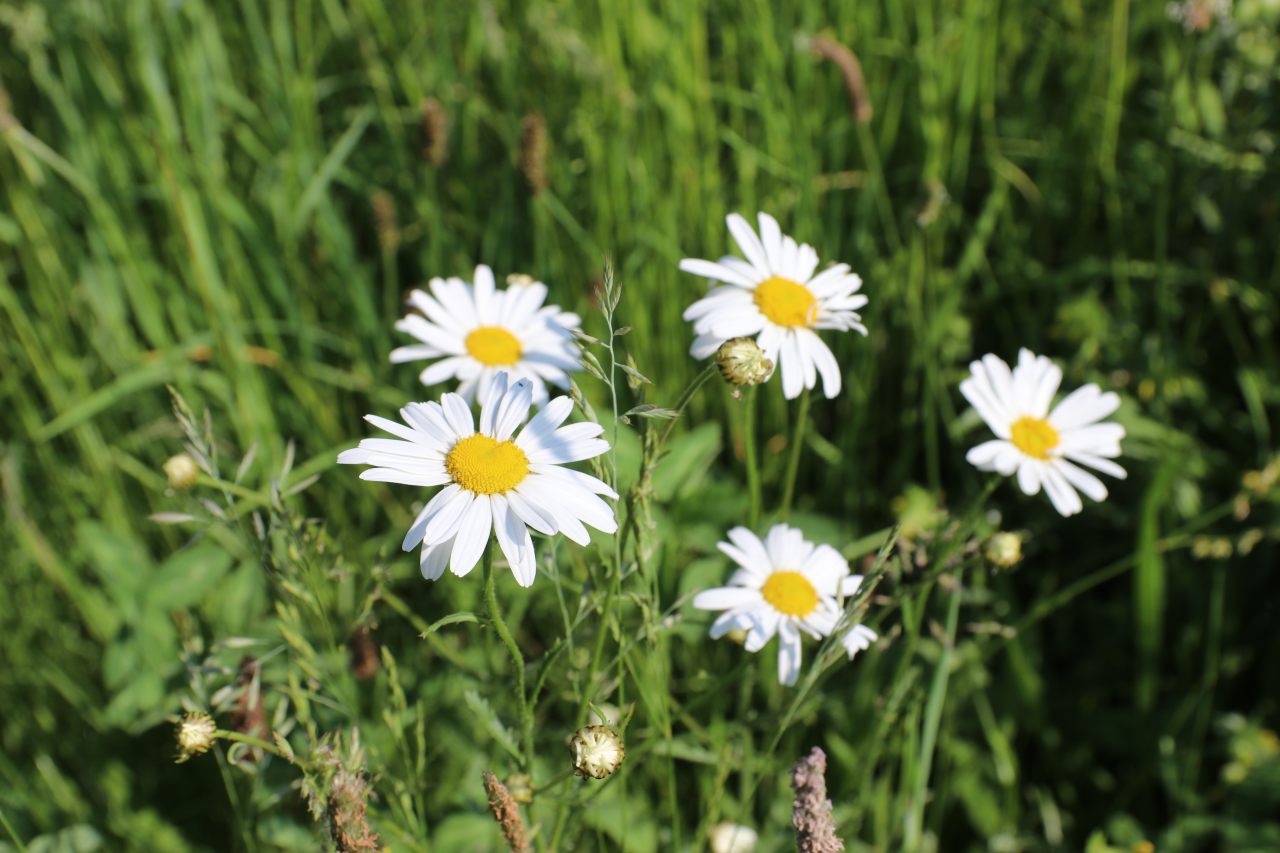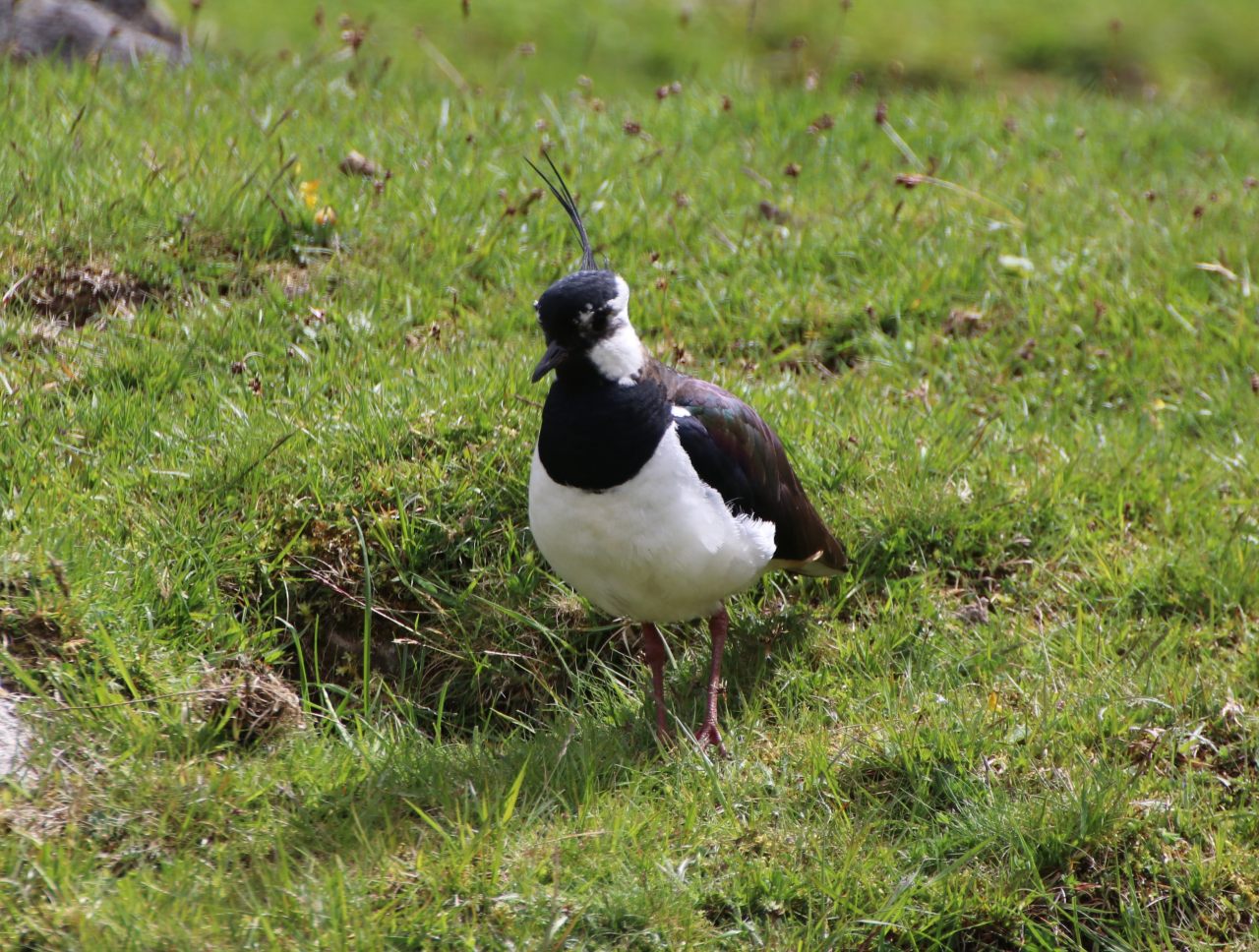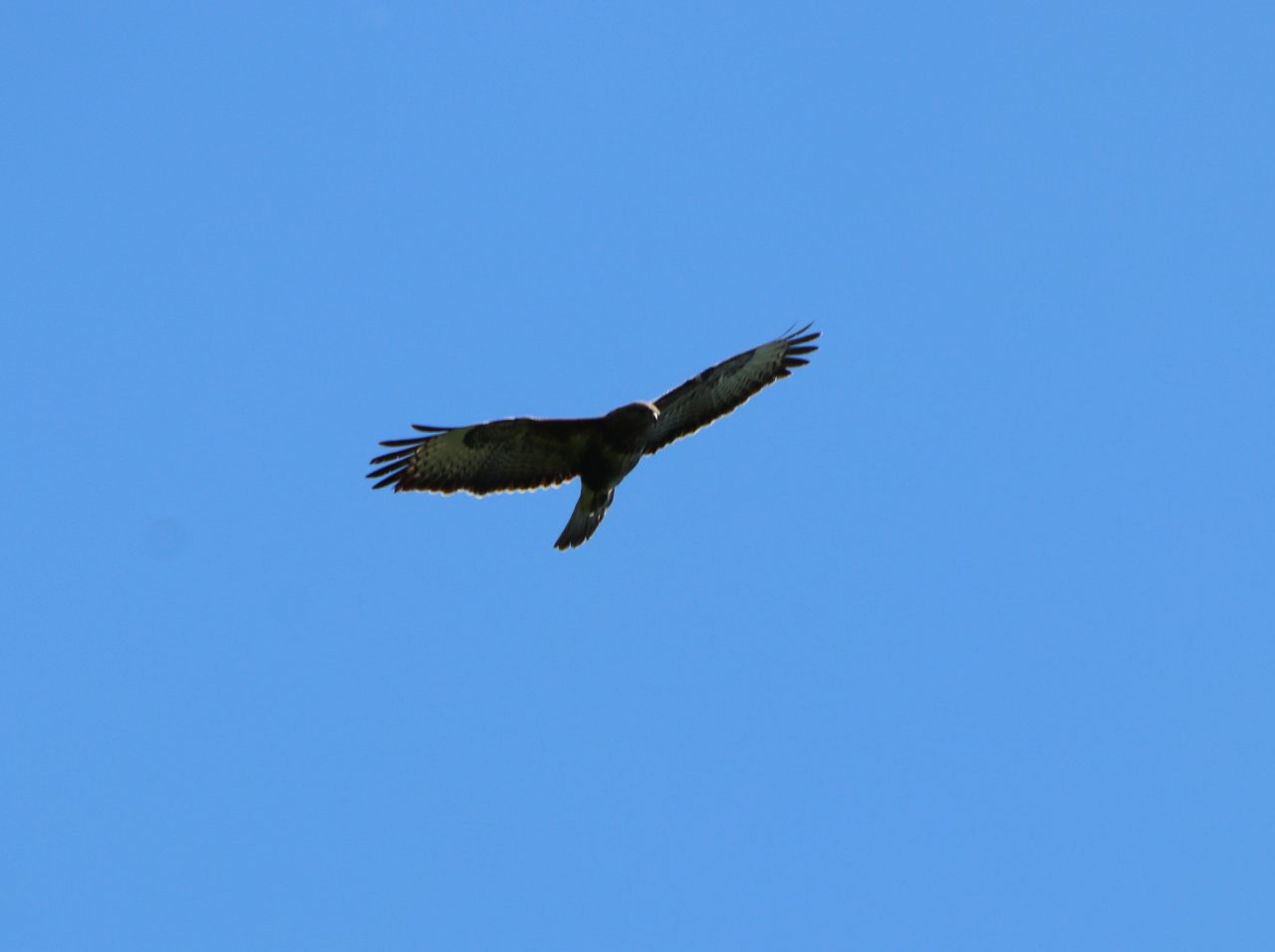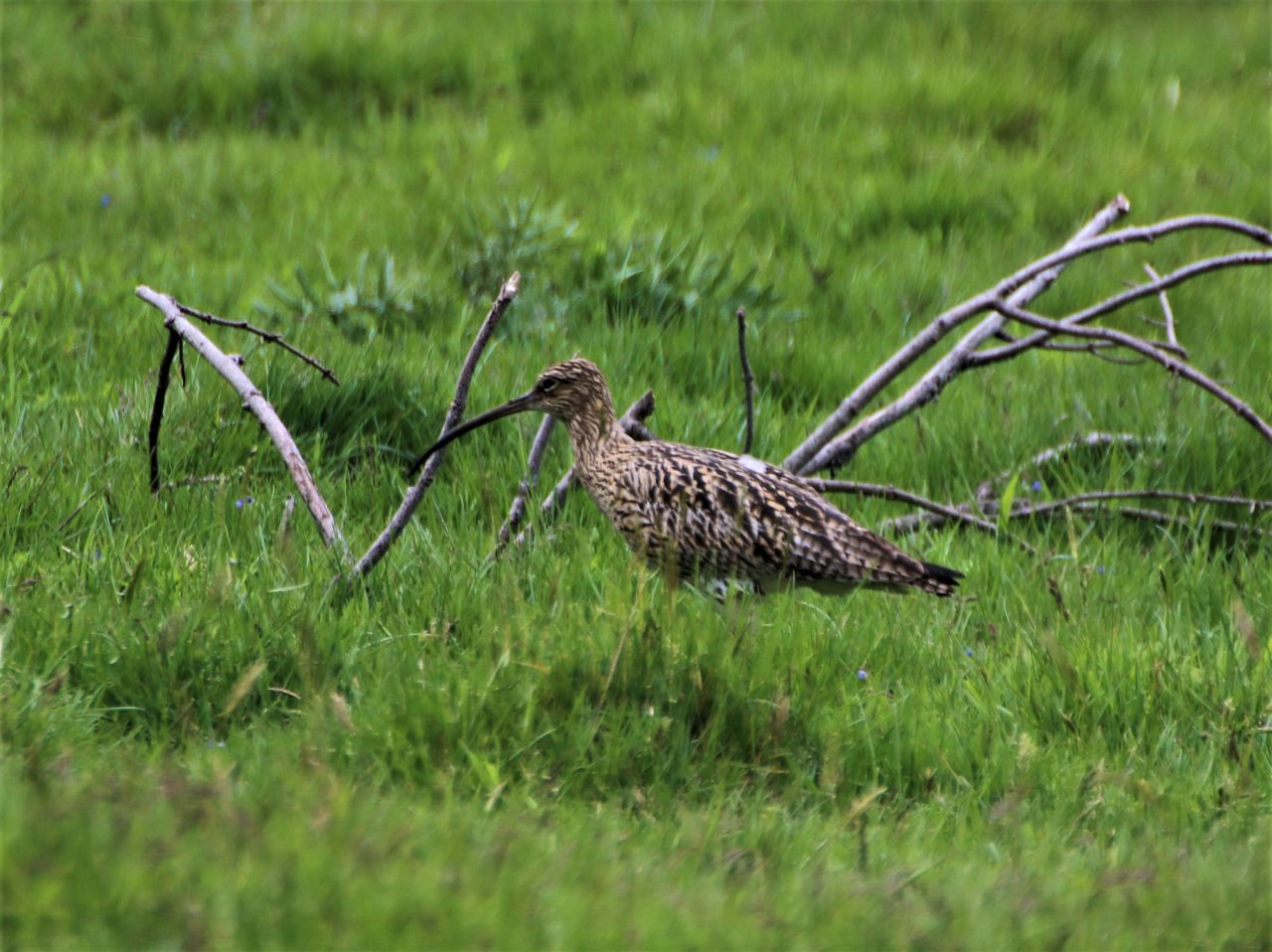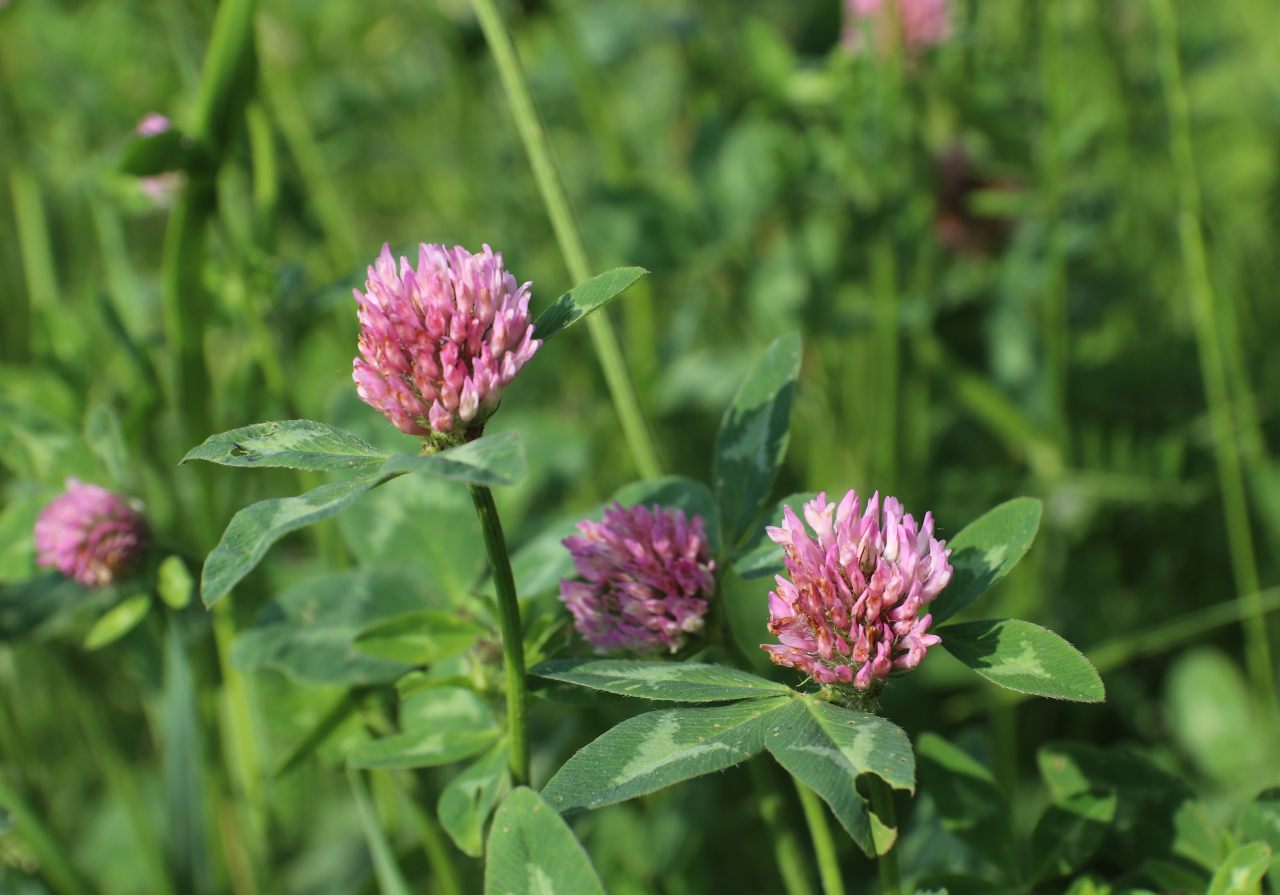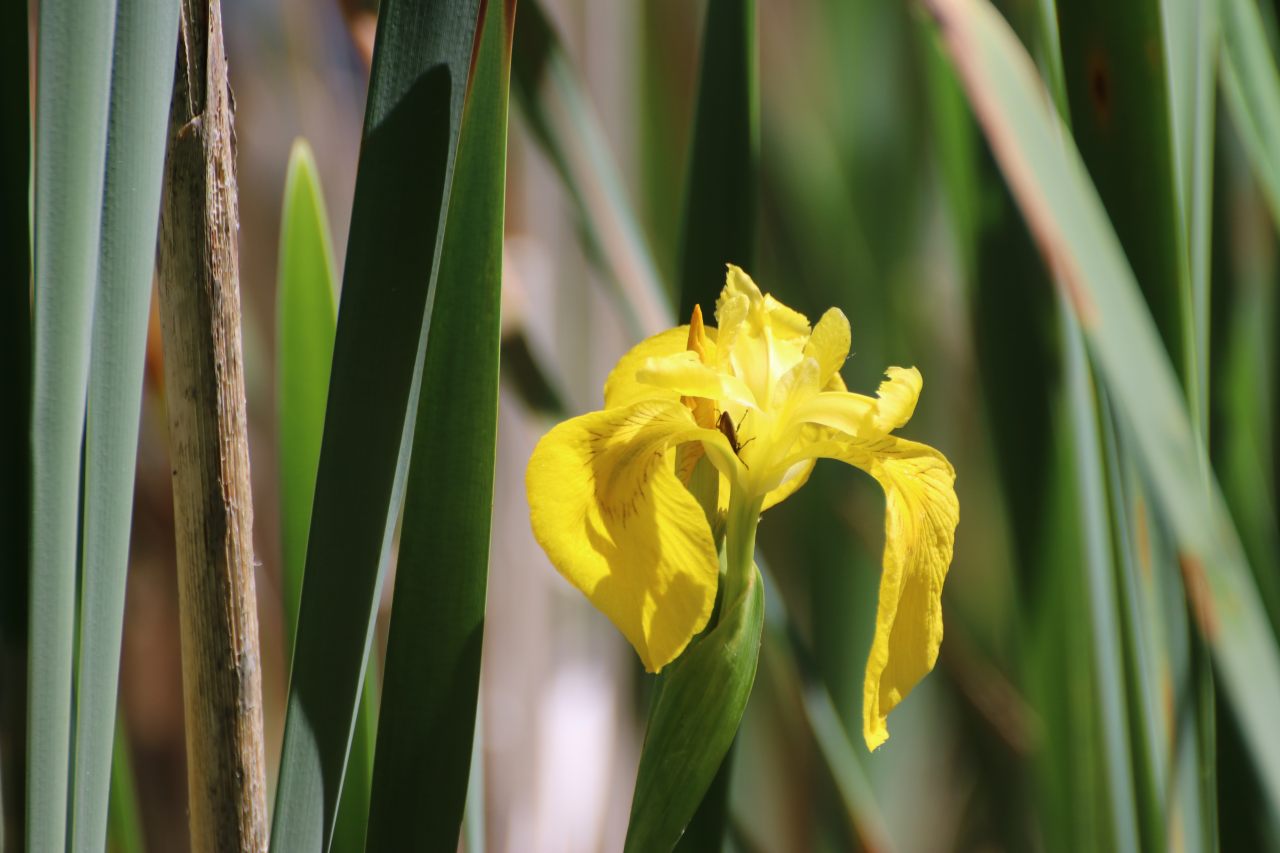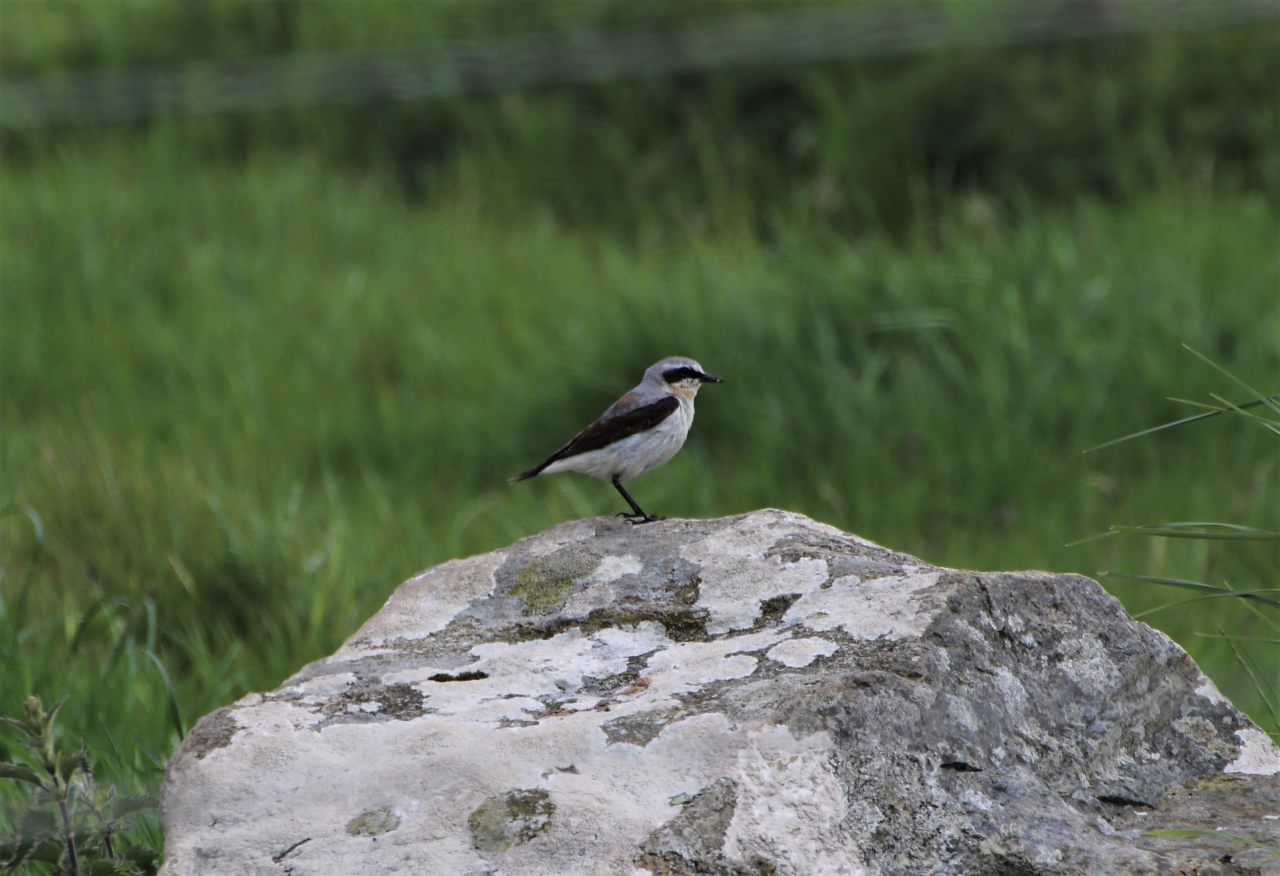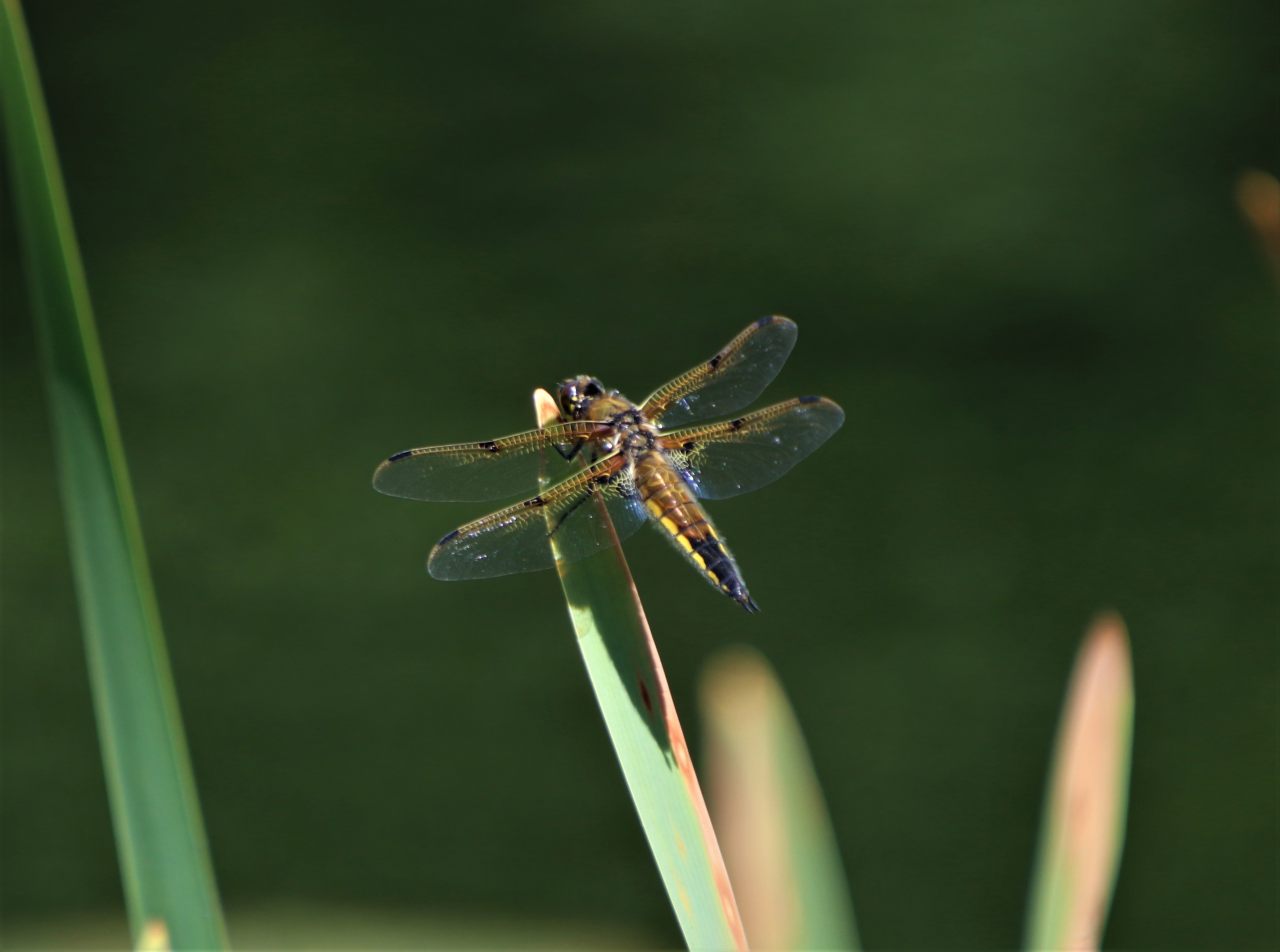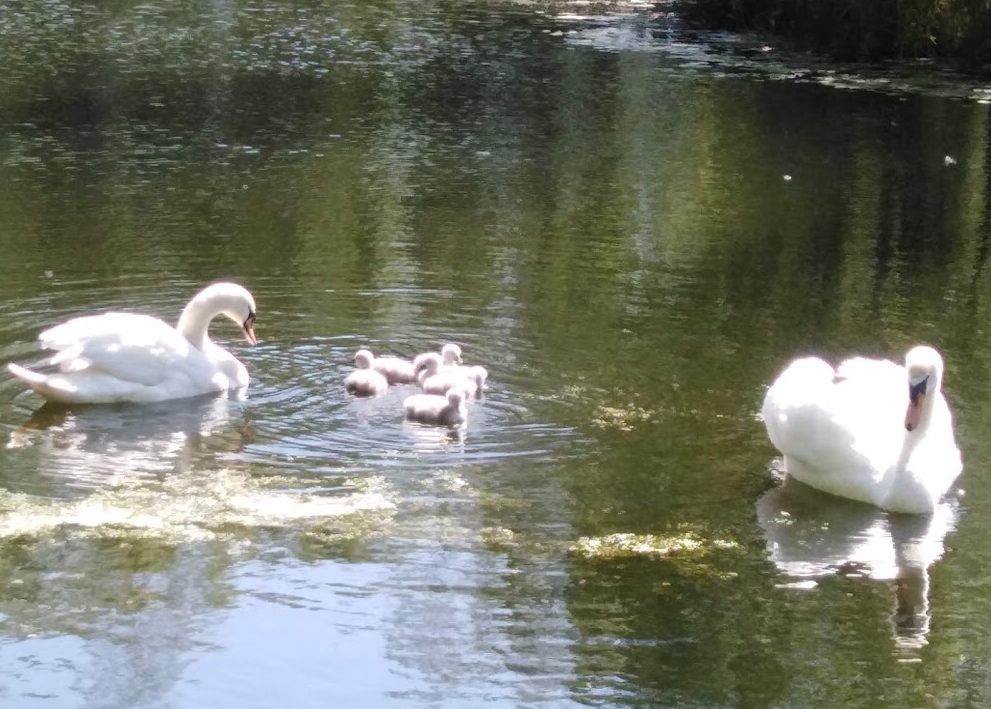

The recent wet weather has created havoc to the wildlife scene in the village. After an excellent early show of butterflies including holly blues, peacock, brimstone, small tortoishell, and red admiral, I haven’t seen any for several weeks. Many bird species have had young, but they often look bedraggled when seen around the area. There have been some good breeding successes with a family of swans at Walk Mill producing 5 cygnets, and young oystercatchers, and lapwing seen on the lake and land at Hockenhull. The emergence of many young buzzards can be seen in the skies above us, and I’ve heard of several young woodpeckers being seen in gardens, together with juvenile jays. Pied wagtails, with their delightful flicking tail movements, have also been quite numerous in and around the village. House martins are doing well at Walk Mill, but are relatively scarce in the village, and there are fewer swallows and swifts than usual.
The Legion meadow has seen more wild flowers appear this year as the area becomes established, and I’m delighted that several common spotted orchids have emerged again this year. The main flowering plants to be seen are a blue cranesbill, a member of the geranium family, yellow rattle, and red clover. The bird song from the trees surrounding the meadow has been superb, with blackbirds, song thrushes and black caps vying to be the top singer.
Damsel and dragonflies are now very active, and a new species for me has emerged at Walk Mill pond, a red eyed blue damselfly. Hundreds of common blue and blue tailed damselflies are flying at present, many mating on the wing, and seen laying eggs in the reeds at the pond margins. A 4 spotted chaser, broad bodied chaser and a southern hawker were the first of the dragon flies to be seen, whilst the most attractive banded agrion damselflies are flying over the river Gowy, often landing on the flowering water crowfoot which is the most common reed to flower there. The otters on our stretch of the Gowy have clearly got young, and regular spraints are to be found under the middle bridge, although rather worryingly again this year there are few signs of water vole to be seen.
The one significant fact about our meadows at Hockenhull this year is that the vegetation is getting taller and thicker each year. Some people say there is no such thing as “global warming” but I have seen emergent vegetation getting taller and taller each year. 30 years ago I could take children and adults from the village to see orchids on the wet meadow and the grasses were then knee high. Now the same area has vegetation that is growing well over my head height, and I cannot get into the area to check on flowers without extreme difficulty.
-

Common Spotted Orchids
-

Oystercatcher
-

Yellow Rattle
-

Lapwing chick
-

Cranesbill
-

Commen Spotted Orchid
-

Village Meadow
-

Common Vetch
-

Ox Eye Daisy
-

Lapwing adult
-

Buzzard
-

Red Eyed Damselfly at Walk Mill
-

Curlew
-

Greylag Goose
-

Red Clover
-

Yellow Flag Iris at Walk Mill
-

Star bird of the month - Wheatear
-

Four-spotted Chaser at Walk Mill
-

Walk Mill Cygnets

